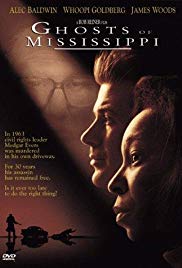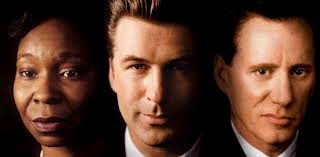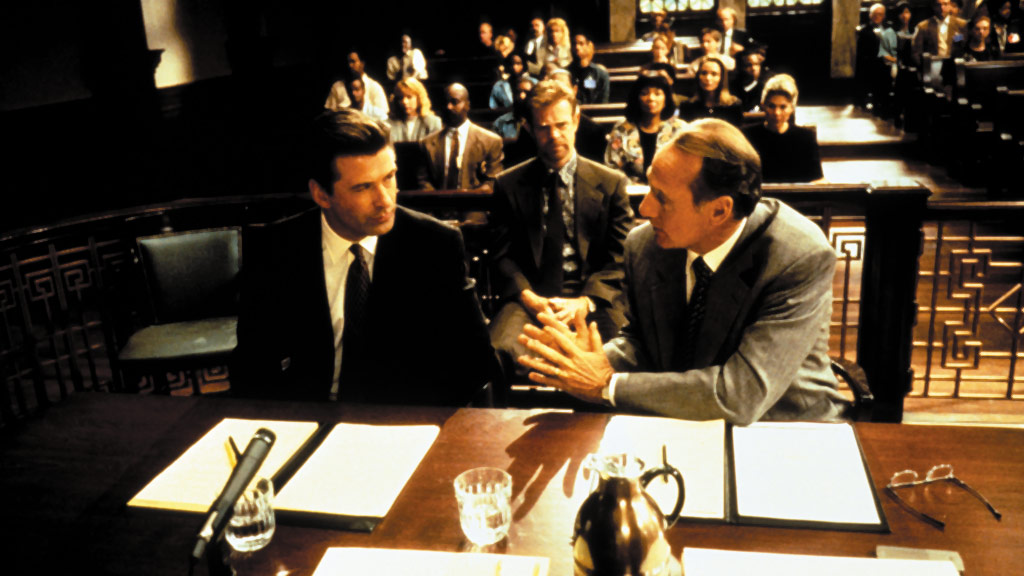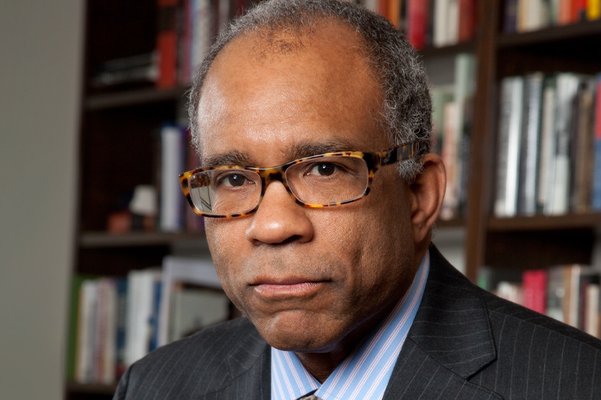“Ghosts of Mississippi” will introduce children to the dangers of Civil Rights work in the South in the 1960s and to the difficulties in obtaining justice for slain Civil Rights workers. The film also shows Mississippi’s change to a state that will afford justice to the family of a slain Civil Rights activist. The movie describes the workings of the legal system, a widow’s perseverance and crusade for justice, as well as a prosecutor’s commitment to righting an old wrong.
Medgar Evers (1925 – 1963) was a black Civil Rights leader and the first Mississippi field secretary for the NAACP. He was instrumental in organizing voter registration drives, boycotts and sit-ins in various parts of the state. Evers is quoted as saying: “You can kill a man but you can’t kill an idea.”
Medgar Evers was assassinated just after midnight on June 12, 1963. The evening before, President John F. Kennedy had delivered an address to the nation on the need for progress in granting more Civil Rights to black Americans. The assassin was soon discovered to be Byron de la Beckwith, a virulent racist. Evers’ murder caused both national and international uproar. As a World War II veteran, Evers was buried with full military honors in Arlington, National Cemetery. In 1964 local prosecutors tried to convict de la Beckwith on two separate trials, but on both occasions all white, all male juries could not reach a unanimous verdict. There is no statute of limitations for murder. Almost 30 years later, de la Beckwith was successfully prosecuted by a team headed by Assistant District Attorney Bobby DeLaughter.
For biographical sketches about Medgar Evers, see The Mississippi Writers’ Page.
Why was de la Beckwith tried a third time, three decades after the murder? Myrlie Evers never stopped trying to keep the memory of her husband alive and kept pressuring authorities to reopen the case. In 1989, newspaper reporter Jerry Mitchell discovered evidence that the Mississippi State Sovereignty Commission had secretly provided de la Beckwith’s defense with information about prospective jurors in the 1964 trials. The resulting stories attracted the attention of Assistant District Attorney Bobby DeLaughter. They left a very bad taste in his mouth.
Initially, Mrs. Evers distrusted DeLaughter but eventually, he gained her confidence. The prosecution was required to investigate a case that was 25 years old. In the end, de la Beckwith was convicted almost 30 years after the murder. De la Beckwith died in prison on January 21, 2001.
When word got out that the District Attorney’s office was considering reopening the case against de la Beckwith some people told DeLaughter: “He’s too old.” “The case is too old.” “It will cost the taxpayers too much money.” “It will open up an old wound.” What surprised him was the virulence of the response. The case was striking some nerve among Mississippians. DeLaughter explained his position this way.
I felt that Mississippi and I were being put to the test. We say that no man is above the law; but what if he is seventy years old? We claim that we value all human life; but what if the life is that of a Civil Rights activist in 1963 Mississippi? There is no statute of limitations for murder; but what if it’s been a quarter century? In pursuing justice and maintaining freedom, how much taxpayer money is too much? Finally, if justice has never been finalized in such a despicable and immoral atrocity and pursuing it will open an old wound, is it not then a wound that needs to be reopened and cleansed, instead of continuing to fester over the years, spreading its poison to future generations? [excerpt from Never Too Late: A Prosecutor’s Story of Justice in the Medgar Evers Case]
As shown in the film, DeLaughter also focused on the personal tragedy of the murder, “There were peaks and valleys involved in this and each time I’d be in a low spot, or feel like just giving up and throwing in the towel, I’d take a drive out [to the house where Evers was shot and died]. … It would always bring home to me, no matter what else the case involved, what happened in this driveway to this guy in front of his family — nobody deserves that, and no decent person could turn their back on it.”
The Mississippi State Sovereignty Commission was charged with preserving segregation in the state. It kept secret files on some 78,000 Civil Rights workers and alleged subversives. The Commission went out of existence in 1973 when the Mississippi governor (the same man who, as district attorney, had tried unsuccessfully to convict de la Beckwith in 1964) vetoed funding for the agency. The Legislature tried to seal the Commission’s files but they have been opened to the public by federal court order.
The files of the Sovereignty Commission reveal that de la Beckwith had applied for a job with the Commission stating that: “[I am] expert with a pistol, good with a rifle and fair with a shotgun — and — RABID ON THE SUBJECT OF SEGREGATION!… I, therefore, request that you select me, among many, as one who will tear the mask from the face of the NAACP and forever rid this fair land of the DISEASE OF INTEGRATION with which it is plagued with.” (sic) While de la Beckwith wasn’t hired, the Sovereignty Commission did help him after the assassination by providing information to the defense about the individuals in the jury pool.
Myrlie Evers left college to marry Medgar Evers. She was his assistant in his work for the NAACP. After he was murdered, she continued his work, speaking for the NAACP at local Civil Rights rallies. She moved to California in 1964, completed her education at Pomona college and began a distinguished career in business and public service. She served as Director of Planning and Development for the Claremont Colleges, Director of Community Relations for ARCO, Commissioner of the Los Angeles Board of Public Works managing 6,000 employees and a $400 million budget (Evers was the first black woman ever to serve in the position), and national President of the NAACP from 1995-1998. Myrlie Evers states: “I have reached a point in my life where I understand the pain and the challenges; and my attitude is one of standing up with open arms to meet them all.” Watch Me Fly (Little, Brown & Co., 1999) Myrlie Evers, written with Melinda Blau.
In the film, Lloyd “Benny” Bennett, one of DeLaughter’s investigators, played himself. His father had participated in the initial investigation into Evers’ assassination. During the second investigation, Bennett and Myrlie Evers became friends.
This film captures the truth of the incident and in most respects is strikingly accurate. There are a few historical inaccuracies. (1) The window of prosecutor DeLaughter’s car was not smashed and painted with a swastika; (2) the meeting in the courthouse men’s room between de la Beckwith and prosecutor DeLaughter didn’t happen; (3) While there was a telephone threat that the DeLaughter house would be bombed, the DeLaughters did not flee their home in panic; (4) it was District Attorney Peters and not Delaughter who cross-examined the alibi witness, a powerful part of the courtroom drama; (5) DeLaughter’s parents were generally supportive of him in the investigation and he was never a member of a country club; (6) DeLaughter didn’t sing “Dixie” to his daughter to put her to sleep; (7) the news conference after the verdict took place in an empty courtroom; not on the courthouse steps.









